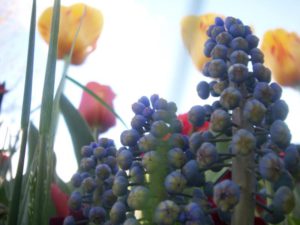 We’re seeing pansies and mums – but we should be thinking tulips and daffodils! If you want to enjoy these first signs of spring next season, the time is now to plant spring-flowering bulbs. Here is a checklist to speed up the buying and planting process.
We’re seeing pansies and mums – but we should be thinking tulips and daffodils! If you want to enjoy these first signs of spring next season, the time is now to plant spring-flowering bulbs. Here is a checklist to speed up the buying and planting process.
#1 – Decide where to plant
Select a place in your yard that showcases your display to best advantage. Make sure it is a sunny and well-drained location. Measure the area so you know about how many square feet will be planted.
#2 – Shopping tips
- Shop or order early to have the best selection and availability.
- Buy bulbs according to the square feet of planting space you have and without spreading them too thin. Spreading bulbs across too much space will lessen their visual impact. Here are guidelines for how many bulbs should be planted per square foot of garden:
- Standard tulips and large daffodils: 5 bulbs
- Miniature daffodils: 6-11 bulbs
- Alium globe master: 1-2 bulbs
- Crocus: 8-12 bulbs
- Muscari: 14-18 bulbs
- Hyacinthoides: 5-6 bulbs
#3 – Planting tips
- Plant bulbs as soon as possible after they are purchased.
- Group bulbs by their bloom time. Refer to the catalog or package label for details. Daffodils and crocus are early bloomers and tulips can have 3 different bloom times. For best impact, group bulbs by bloom time and with the number per square foot above.
- Plant in groups rather than rows. This allows you to dig one hole and place several bulbs inside it which is more efficient than planting bulbs one at a time.
- Plant bulbs at a depth that’s three times their height.
- The pointed end should be planted up. If you can’t tell, place the bulb on its side and the bulb will send shoots up and roots down.
- Fertilize with a product for bulbs that is high in phosphorous.
- After planting, spread a layer of leaves or wood mulch on top. Mulched bulbs have better results than non-mulched beds or those that are covered with rock.
#4 – Protect from predators
Daffodils, allium and grape hyacinth are less appetizing to wildlife than other varieties. Be aware that voles, elk and deer are common bulb predators and will dig them up. Spreading about 2 inches of pea gravel over the beds or a layer of chicken wire will help to deter these predators.
Courtesy of ALCC Sustainable Landscape Partners
